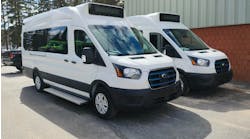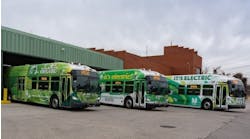Omnitrans added a million riders in 2011-12 compared to the prior year, surpassing the 16 million mark for the first time since 2004. On an average weekday, the transit agency’s buses carried over 52,000 passengers, a 7.7 percent increase from fiscal year 2011.
"Transit ridership is growing across the country," said CEO/General Manager Milo Victoria, "but Omnitrans is ahead of the trend. Nationally, ridership was up about 5 percent for the first quarter of calendar year 2012, while Omnitrans grew 8 percent."
A key growth factor is the "Go Smart" college program that provides unlimited bus rides to students at participating colleges. A one-year pilot program generated over 1.4 million trips from students at California State University San Bernardino, Chaffey College, Crafton Hills College and Valley College. More than 25 percent of enrolled students hopped on board. The pilot program was funded by 15 local cities, the County, partner colleges and Omnitrans. This spring students at Chaffey, Crafton Hills and Valley Colleges approved student fees to continue the program for five years. CSUSB is hoping to fund another year of the pilot program. The Art Institute of California — Inland Empire joined the program in May.
The growth comes at a time when the transit agency has implemented only modest enhancements after service cuts were implemented in 2010 due to budget shortfalls. While ridership increased 7.4 percent on average among all routes and services, some led the way. OmniGo community shuttle routes continue to capture new riders, achieving a 34 percent upsurge year over year. Introduced in September 2010, OmniGo serves the cities of Chino Hills, Grand Terrace and Yucaipa using smaller 16-passenger vehicles more suited to these residential areas than traditional transit buses.
Express Route 215, which travels the 215 freeway corridor to connect San Bernardino and Riverside posted a 17 percent gain. "This bodes well for our sbX bus rapid transit line under construction," said Director of Marketing Wendy Williams. "Commuters are looking for low cost alternatives that are time competitive with driving."
While high gas prices are likely contributors to rising transit ridership, national studies also show that younger Americans are driving less. The U.S. Public Interest Research Group found that between 2001 and 2009 the average annual vehicle miles traveled by Americans ages 16 to 34 fell by close to a quarter, from 10,300 to 7,900 per capita. At the same time, the amount of bicycling, walking, and public transit ridership increased.


